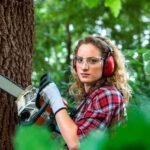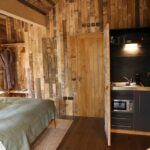Preserving The Health Of Your Trees
Tree diseases can have a significant impact on the health and vitality of trees all over the UK, and our tree surgeons have the tools, skill, and knowledge to stop a wide range of tree health complaints in their tracks. As the tree surgeon Woodbridge property owners trust, we’ve dealt with a huge range of tree diseases. Here are five of the most common:
Ash Dieback
Ash dieback is a highly destructive fungal disease that, as the name suggests, affects ash trees. Our expert team can see if this disease is present by inspecting the tree’s crown and foliage for dieback, wilting, and any signs of diamond-shaped lesions on the bark. We’ll then get to work pruning infected branches, implementing appropriate sanitation measures, and providing advice on tree replacement and diversification to stop the disease’s spread.
Oak Processionary Moth
The oak processionary moth is an invasive pest that not only poses a threat to oak trees, but human health too. We can help stop the pest in its tracks by identifying infested trees, removing, and safely disposing of the caterpillar nests, and carrying out pest control measures such as biological control or chemical treatments. We’ll also give you advice on preventing the spread of the pest and how to protect yourself and others from its irritating hairs.
Phytophthora Root Rot
Phytophthora species are soilborne pathogens that can cause root rot in many kinds of tree species. We can diagnose phytophthora root rot by assessing the tree’s overall health, carrying out root examinations, and taking note of symptoms such as canopy thinning and dieback. We will then introduce measures such as improving drainage, managing soil moisture levels, and applying fungicides to drive out disease and boost the speed of the tree’s recovery.
Horse Chestnut Bleeding Canker
Horse chestnut trees are vulnerable to bleeding canker, which is caused by bacteria. Our highly skilled tree surgeons can identify the disease by looking for any distinctive bleeding lesions on the trunk and branches. We’ll then implement techniques like pruning infected branches, focusing on proper tree nutrition and care, and deploying treatments to manage the disease’s impact on tree health.
Dutch Elm Disease
Last but definitely not least is Dutch elm disease, which has single handily devastated the elm tree population in the UK. We can promptly identify infected trees and will implement appropriate sanitation measures and control methods like tree removal and safe disposal of infected material. We know how important trees are to an outdoor space, so we will give you details of disease-resistant elm varieties and how to carry out proactive monitoring.






Leave a Reply
You must be logged in to post a comment.